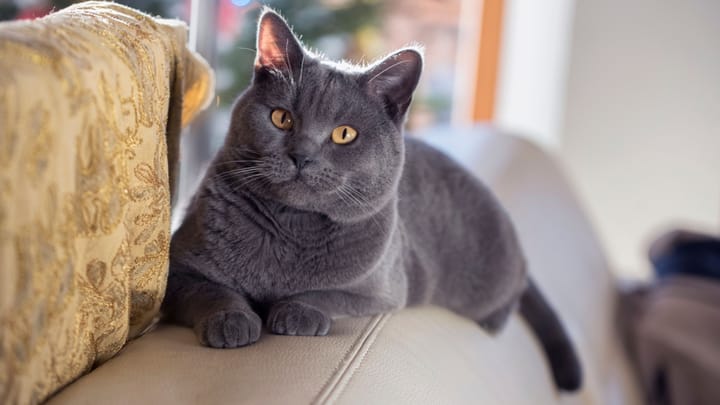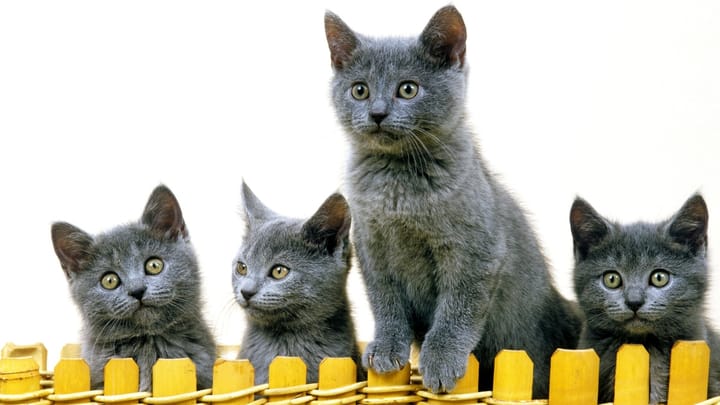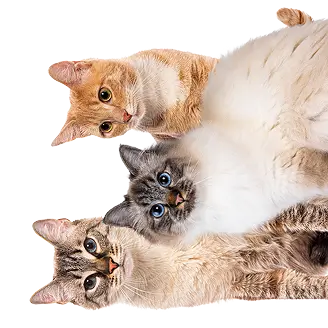Chartreux


It was long believed that the Chartreux was created by the Carthusian monks, who were also called “Chartreux”, but this is not the case. This cat’s popularity in France earned the breed the nickname “cat of the French”. Their thick fur is the main characteristic of this breed - it was so revered that it used to be sold and passed off as mink fur. Their golden eyes are another distinctive feature of this breed, for which reason they are very often, paradoxically, confused with the British Shorthair, the “cat of the English”.
|
Life expectancy |
The Chartreux has a life expectancy of between 13 and 15 years |
|
Temperament |
|
|
Adult size |
Female
Between 12 and 14 in
Male
Between 12 and 16 in
|
|
Adult weight |
Female
Between 7 and 11 lb
Male
Between 7 and 15 lb
|
|
Coat colour
The only permitted colour is blue, in all its shades, from the lightest to the darkest. |
Blue |
|
Type of coat
Short |
Short |
|
Eye colour
Yellow |
Yellow
|
|
Purchase price |
The Chartreux costs approximately 400£ |
The Chartreux has some very close physical similarities with other blue-haired breeds such as the Korat and the Russian Blue, but it’s the British Shorthair that they are confused with the most often, in large part because of their eye colour. It should be noted that several lines of Chartreux were crossed with British Shorthairs in order to enlarge the gene pool of the latter, just as several lines of British Shorthair used the Chartreux to do the same.
More details about the Chartreux
Chartreux: Origins and history
Although it is said that the Chartreux is the only native cat from France, they were in fact originally native from Turkey and Iran, and transported to France at the time of the Crusades. Although legend has it that the breed was created and raised by Carthusian monks, which was said to explain their wisdom, calm and strength, this is not the case. The term ‘Chartreux’ actually appeared towards the beginning of the 18th century, within natural history and trade literature. Here, it was used to refer to their fur, which was often compared to the mink fur that was common within fur trade at the time.
The breed almost disappeared at the beginning of the 20th century, but was saved by the Chartreux-lovers of France. Local communities, particularly in Belle-Île, helped to build the breed back up to its former strength. Cats of the breed were even adopted by several well-known figures of the mid-20th century, such as Charles de Gaulle, whose cat, ‘Gris-Gris’, helped restore the Chartreux’s status as cat of the French. Even today, there are owners who maintain that their Chartreux is a descendant of Gris-Gris. It wasn’t until the late 1980s that the breed was popularised and accepted by the American associations, before today reaching recognition by almost all the feline associations in the world.
Physical characteristics of the Chartreux
The Chartreux has a bulky, muscular and powerful body which gives them the appearance of a teddy bear. Their large yellow eyes stand out on their rounded face, and their famous coat is thick, woolly and waterproof.
Chartreux: Characteristics
Chartreux: Behaviour
Breed compatibility Chartreux
Chartreux: Purchase price
The average purchase price of a Chartreux is aproximately £400. The price often varies according to lineage, breeding, age or even sex. For the monthly budget, it will take about £25 per month to meet the needs of this feline, offering a quality diet and ensuring it stays healthy.
Chartreux: Shedding
Heavy !
The spring moult can be impressive and is often described as "exasperating". During this period, they will require more frequent brushing, and you can probably count on vacuuming a bit more often.
Chartreux: Grooming
Their fur requires brushing once a week because, although it is short, the density means it cannot fall off. It is nevertheless very easy to brush their fur. Beyond the usual care required by all cats, there are no specificities for the maintenance of this particular breed.
Chartreux: Health
The Chartreux has the normal life expectancy for a cat, around 13 to 15 years.
As you’d expect, their thick fur is a natural insulator, which is particularly resistant to cold and almost as effective at protecting them from heat. With such an impermeable coat, this is a cat that doesn’t think twice about the temperature outside when deciding whether to go for a wander.
It is important to maintain a good level of activity to ensure this breed doesn’t get overweight.
There are no diseases typically related to this breed of cat, but diseases related to the urinary system (cystitis) and leg joints (dislocation, ball joints, etc.) may be more common.
There are no unique features about this breed’s reproduction.






